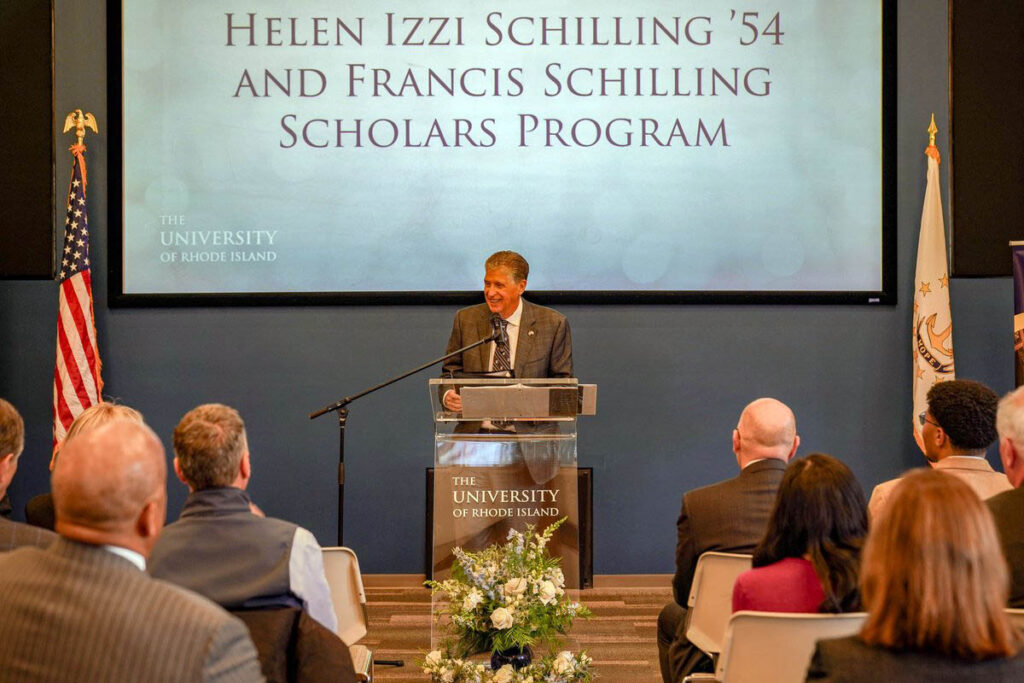In a surge to safeguard public forests and endangered species from the growing timber industry, ocean state environmentalists have rallied behind a bill that seeks to prohibit logging in old growth forests and natural area preserves.
The last time the Rhode Island General Assembly passed an act to preserve natural areas was in 1993. Nathan Cornell ’20, president of the Rhode Island Old Growth Tree Society, hopes to change that.
The Old Growth Forest Protection Act would reserve forest biodiversity on public land – the first bill of its kind in Rhode Island’s history, according to Cornell.
Old growth forests are groups of trees 100 years and older, according to Cornell, the bill’s spearhead. These forests are spores of ecosystem variety, health and history, Cornell believes these pockets of growth rival younger woodlands in their capacity for wildfire resistance and biodiversity.
The Rhode Island Department of Environmental Management oversees and contracts logging on state-owned land, according to Cornell. With an aim to develop a system for tracking old growth forests, individuals backing the pending act view DEM’s efforts as damaging to habitat growth and preservation.
If enacted, the act would require environmental review before state logging operations, according to the bill’s text as of April 10. It would also require the staffing and funds to mark each tree across the state.
The legislation’s goal is to restrict DEM’s forestry and logging efforts, according to Cornell.
“DEM doesn’t want restrictions, because right now, they allow contractors to log on state land, which they pay to contractors, and the contractors are able to sell it and it profits the timber industry,” Cornell said. “[The system] is a scam.”
DEM uses active management – or logging – to remove debris or diseased timber, according to Cornell. He sees the act as destructive rather than beneficial for habitat health.
“I’ve had meetings with the deputy chief of forestry for DEM and he told me to my face, he said what I’m trying to do with the bill is exactly opposite [of] what [the department] wants to do,” Cornell said.
The department cuts down trees in state-owned public forests for domestic sale and ecosystem health, particularly concerning the threat of wildfires, according to Tee Jay Boudreau, deputy chief and state forester at DEM. While resistance to wildfire increases as trees age, historically resilient trees still die in fires caused by vegetation overabundance and forest debris.
To stop these fires before they form, in addition to preventing the spread of habitat disease, DEM plans to resume its prescribed burns on state lands in Portsmouth, Exeter, West Greenwich, Coventry, Richmond, Glocester, Jamestown and South Kingstown, according to the forest fires program website. The first phase will begin May 6.
“Our active forest management program [works] to the best of its ability,” Boudreau said. “Sometimes that means removing trees and/or doing a man-made solution to creating a habitat that we know is going to thrive in the future and provide us with a varied age, class, diversity and kind of just an overall healthier forest.”
This legislation places the control of Rhode Island’s forests on the statewide planning committee, according to David Gregg, the executive director of the Rhode Island Natural History Survey. The committee’s membership includes individuals such as the Convention and Visitors Bureau president, the Department of Transportation director and the Department of Housing secretary.
“Seriously, are those the people you want to have charged with forests?” Gregg said. “Great. That speaks for itself. That’s a terrible idea.”
Gregg, who is on the state’s Forest Conservation Commission, believes that such legislation creates “dangerous” constraints on forest preservation.
“You have to ask… what is the driver of this?” Gregg said. “I mean, this is somebody who disagrees with DEM’s policies on forest management and is trying to take the whole responsibility of it away.”
Christopher Riely, a forestry specialist in the URI Department of Natural Resources Science, compared the proposed legislation to “millions of handcuffs” on the DEM Division of Forest Environment.
The bill would tie the hands of land trusts in the state, according to Rhode Island Land Trust Council Director Kate Sayles ’08. The council is not taking a position on the bill but believes Cornell’s legislation would restrict forest management and land stewardship.
In lieu of inhibiting DEM’s functioning, environmentalists and foresters should work to support and amend the systems that are already in place, according to Sayles.
Proponents and protestors of the bill agree that cutting down trees is not the ultimate goal, according to Riely. The objective is sustainable forestry, or chopping trees when absolutely necessary.
“From time to time, we see things like the old growth bill that, on its surface, has language that seems reasonable, but it’s written in a way that doesn’t quite capture the essence of how this work gets done,” Boudreau said.
The bill is redundant to DEM’s processes and simply adds an extra level of bureaucracy to a situation that has other solutions like campaigning and environmental education, according to Boudreau. Instead of focusing on climate resilience of all land, the bill hones in on one type of forest.
The old growth bill has created conversation around perceived misconceptions about logging and has put new emphasis on the Natural Areas Protection Act of 1993, according to Boudreau.
DEM received an additional $5 million for forest health management and habitat protection through the 2024 Green Bond. The sum will in part fund a partnership between DEM and the state’s nature conservancy to develop property management plans for old growth trees and forests.
There are individual old growth trees on URI’s Kingston Campus but are hidden and unmapped, according to Cornell. These trees also allegedly reside in the North Woods.





